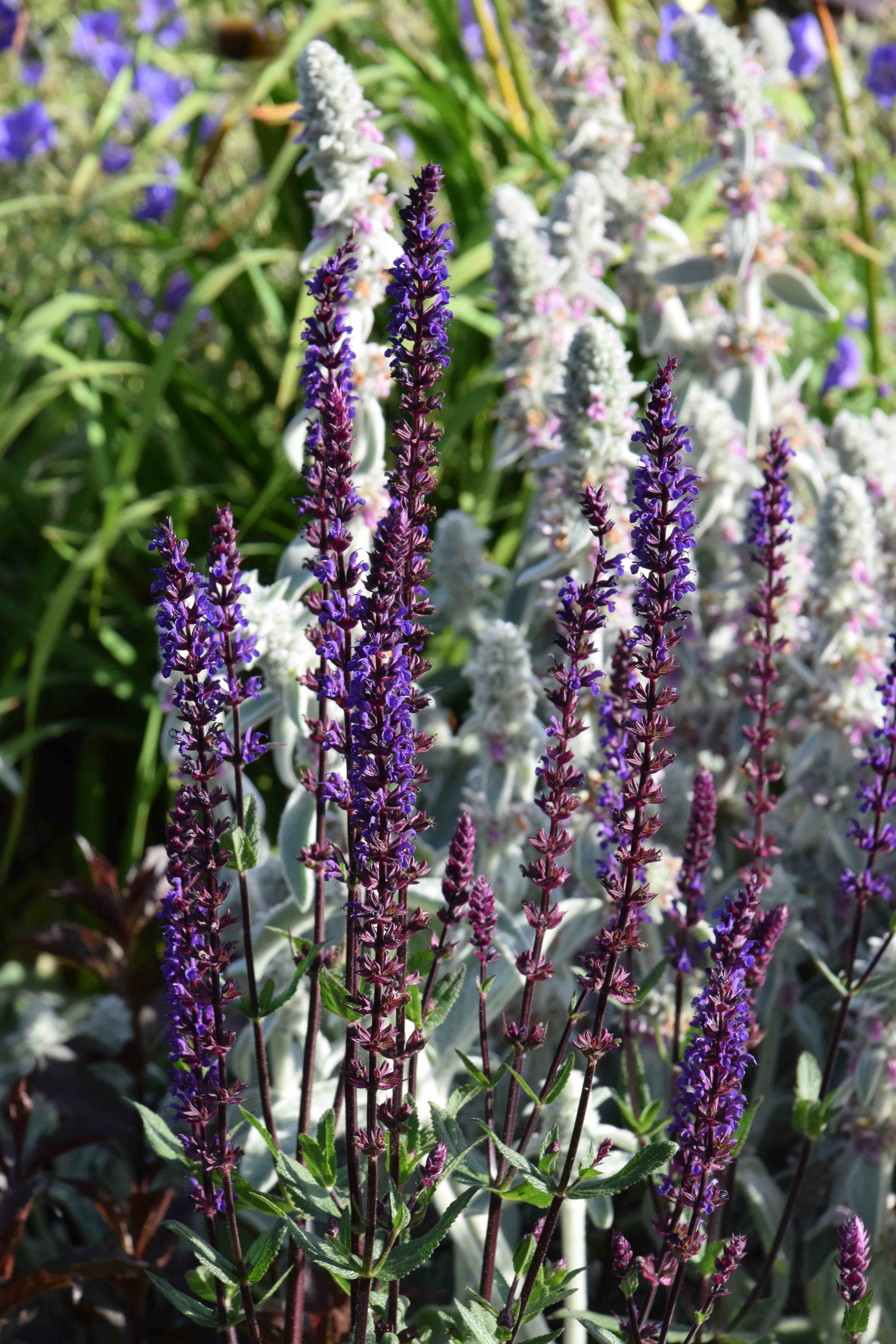
It is rather foolish to pick salvia as a ‘plant of the week’ because there are so many salvias! There are hundreds of species and they vary from annuals to shrubs. Everyone knows the brilliant red bedding salvias, treated as annuals, but not everyone knows that the herb sage is a salvia and rosemary has recently been reclassified as a salvia too! Most salvias from Europe (including sage and rosemary) and Asia are hardy perennials but those from the Americas show the greatest diversity and although a few are hardy, most are frost tender, a shame because they include some of the most beautiful in flower.
Why grow it?
Salvias tend to have small, tubular flowers but make up for that in the sheer number of blooms. The hardy salvias are all loved by bees and often butterflies. The tender species, which are often adapted to pollination by hummingbirds, also have a value for bees, especially bumblebees which will discover how to chew a hole in the back of the flowers to get to the nectar. Many salvias also have aromatic foliage. The hardy species are reliable, easy plants and bloom for many weeks, and will rebloom if cut back. The tender species bloom for many months, continuing into autumn so although they are a bit more work – you need to take cuttings to overwinter in frost-free conditions – they offer a lot of interest and colour.
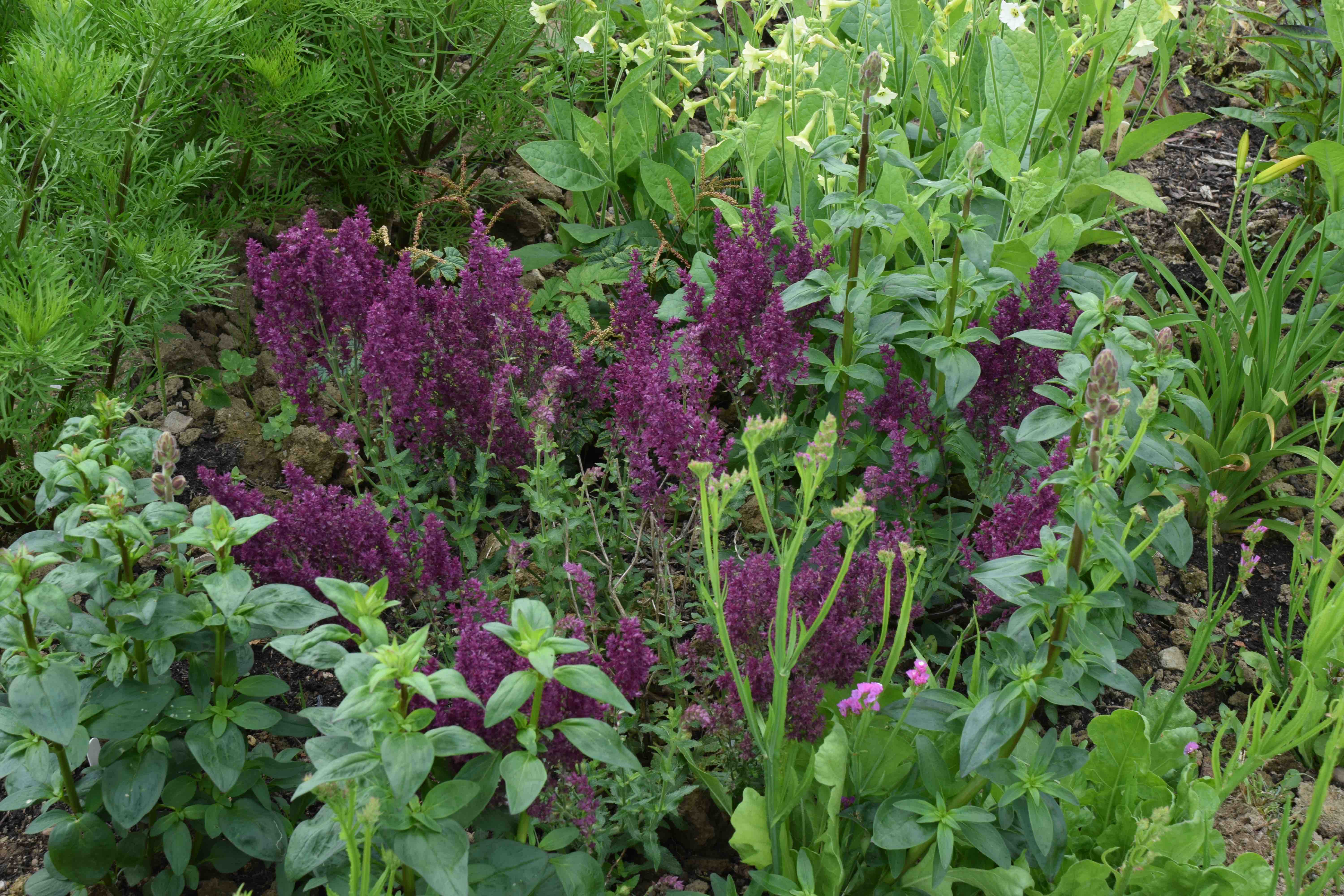
Where to grow it
All salvias love warmth and a sunny site. They also dislike wet soils, with the exception of one I will mention, and are best in light, sandy soil, though they will cope with clay if you improve it with some compost.
Where to start
The hardy salvias, such as ‘Caradonna’ are not looking their best in pots on the garden centre benches right now. But these plants will be well established and are perfect for autumn planting. If you wait till next spring you will get a much smaller plant so these ‘older’ plants are far better value! They will establish in your garden over winter and burst into growth. Salvia nemorosa, and similar Salvia x superba both have upright stems with masses of small flowers that bees adore.
Pots of tender salvias, such as the vibrant magenta ‘Love and Wishes’ and orange ‘Ember Wishes’ will be at their peak and are ideal to add some colour and drama to pots and borders but they are not hardy. I have tried both outside over winter and they don’t survive. They were bred in Australia so perhaps it is not surprising. Some tender salvias will survive in a sheltered spot such as beside a warm wall or in a coastal garden, but it is a risk.
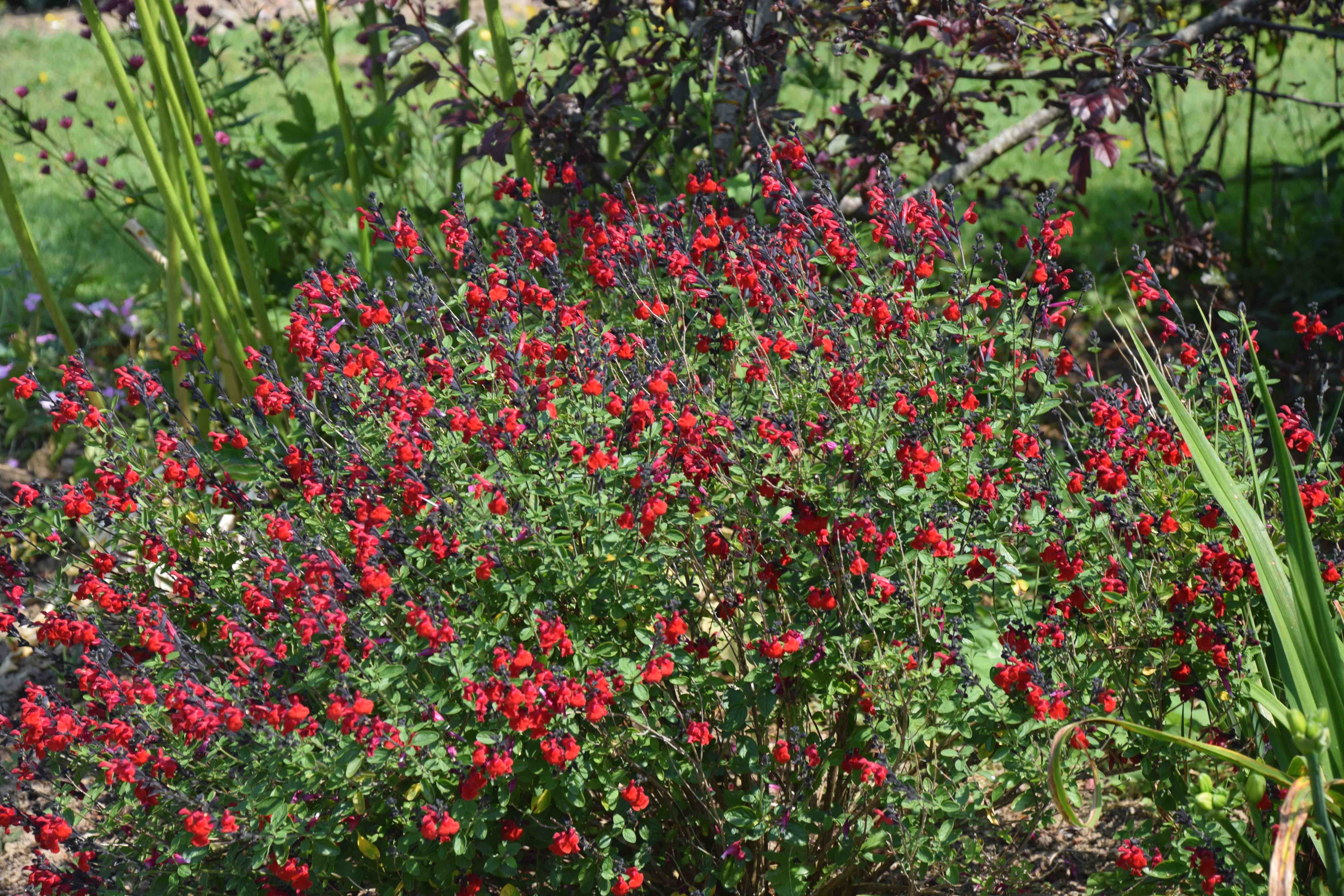
There is a whole group of shrubby salvias with small leaves, bright blooms and twiggy growth. The most popular is ‘Hot Lips’ which has red and white flowers. It is strange because the flowers are often all white or all red, depending on the weather and this bugs me! I am not sure why but I find it troublesome.
So I grow the red ‘Royal Bumble’ instead. There are lots of other colours and all make fine small shrubs for a sunny spot but they are not all completely hardy and can look rather dejected in spring, when they need a good haircut.
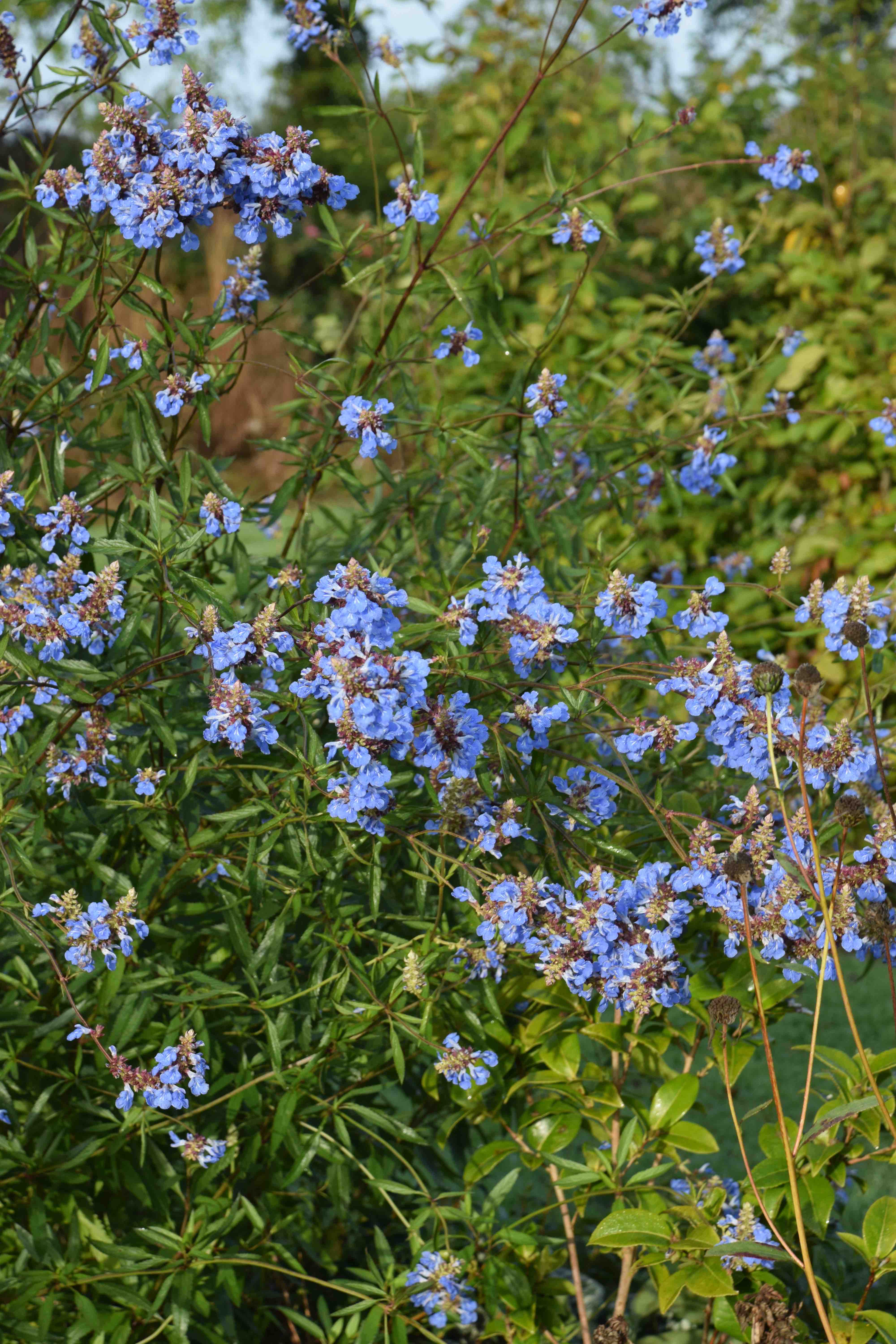
Salvia uliginosa is the exception to the ‘well-drained’ rule and will grow in damp soils – mine is often waterlogged. It can be tricky to place because it is tall and lanky and often flops just when it is at its peak of bloom – September to November. It is from Uruguay and Argentina but is, remarkably, hardy here. The dense flowerheads produce a seemingly endless display of sky blue (HA-HA) flowers and it would look perfect with Verbena bonariense. I pair it with Helianthus ‘Lemon Queen’ and the bright yellow and blue are like the sun and the sky. It is rather vigorous and spreads by creeping stems. It is not quite a nuisance and I love the flowers so much I can forgive it a little bad behaviour.
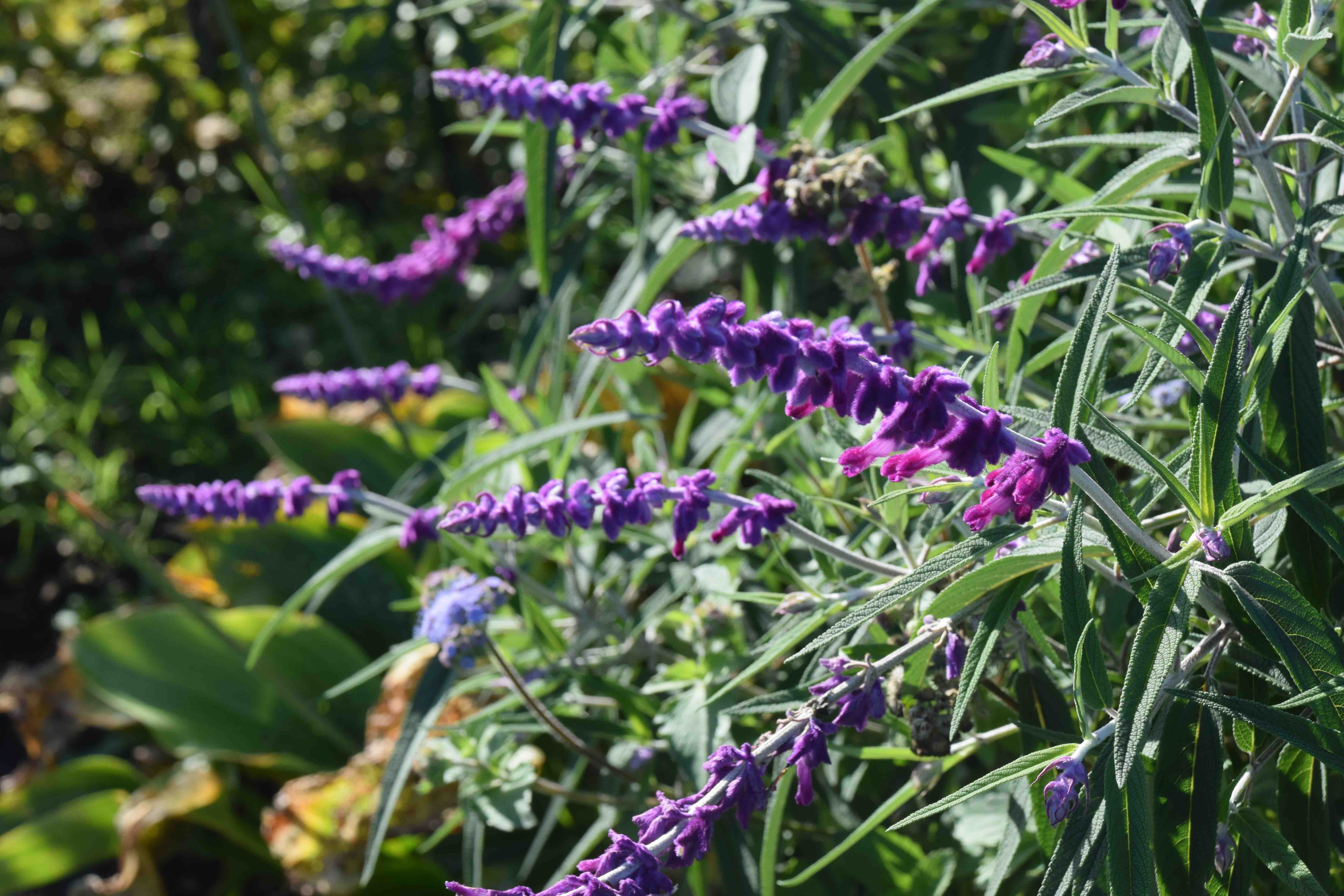
Salvia leucantha is one of the tender salvias that I maintain as cuttings over winter and value for the distinctive leaves and flowers. It looks great in a gravel garden or in raised beds and can survive our winters outside, in sheltered gardens and by the sea. Just imagine it with blue agapanthus!
What to do
The hardy kinds need to be cut back to the woody base in autumn. They can be divided in spring when they are coming into growth or you can take cuttings of the basal shoots. Take cuttings of the tender kinds as soon as possible so they root before winter. Fortunately all salvias root well from cuttings. Keep them in a bright spot over winter and pot them on in spring so you have strong young plants to put out in late spring. If you are risking more tender kinds outside then do not cut them back in autumn but leave the old stems to offer some frost protection and cut them back in March or April and new shoots may grow from below soil level.
Who will like this?
Anyone who wants colour and interest in their summer garden
Plant them with …
The hardy kinds are ideal for herbaceous borders or in front of small shrubs. Most are tolerant of drought and associate well with silver foliage and shrubby herbs. The tender kinds are great in large containers and with other tender plants such as dahlias, cannas and bananas.
Weekly reminders
Lawn care
As autumn approaches there are several things we can do to the lawn. If it is necessary, this is the perfect time to sow a new lawn or to lay turf. If you need to resow patches or repair edges, do it now. You can also apply an autumn lawn food to strengthen the grass roots and to get the lawn ready for winter. If you have chafer grub problems or leather jackets in the lawn you can apply biological controls now too. And this is the time to apply a mosskiller and scarify the lawn to remove moss.
Plant strawberries
For good crops of strawberries next year, this is a good time to plant. Plant them in well prepared beds or in pots. If you have a polytunnel you can plant some in growing bags or pots for an earlier crop.
Control weeds
With cooler, damper weather, weed seeds start to germinate. When the weather is dry enough, hoe them off or weed them out while they are still small. It is easy to leave them and then the ground gets so wet later in autumn and they are difficult to remove. If left they will provide a fertile place for slugs and snails to feed and breed.